Asus ROG Zephyrus Duo 15: two screens and maximal performance – HWCooling.net
Parameters and details
Zephyrus is a premium line of gaming laptops that merges maximum performance with unique design and functions. The hallmark has always been the AAS which stands for cooling with a flexible portion of the bottom that would uplift the notebook a few mm. On the other side of the portfolio there are ZenBooks, where Pro Duo with two displays attracted our interest last year. A new flagship, that merges the best that the manufacturer can offer, is here.
Basic parameters
ParametersAsus ROG Zephyrus Duo 15 GX550LXSDimensions360 × 268 × 20.9 mmWeight2517 gDisplay15,6″, 16:9 4K 3840 × 2160 px, IPS, 60 Hz, matte, 100 % AdobeRGB, Pantone Validated, G-Sync
14,1″, 32:9 4K 3840 × 1100 px, IPS, 60 Hz, matte, touchProcesorIntel Core i9-10980HK, 8C/16T, 45 W, 14nmGraphics cardNvidia GeForce RTX 2080 Max-Q 8 GB GDDR6, 90 W, boost clock 1330 MHz / Intel UHD 630, integratedMemoryPriepustnosť zbernice32 GB DDR4 – 16 GB SODIMM (3200 MHz) replaceable, 16 GB onboardStorage2× 1 TB SSD M.2 PCIe NVMe RAID 0, upgradeable Ports1× USB-C Thunderbolt 3 40 Gb/s (DisplayPort 1.4, Power Delivery), 1× USB 3.2 Gen 2 10 Gb/s typ A, 2× USB 3.2 Gen 1 5 Gb/s typ A, 1× HDMI 2.0b, 1× RJ-45 Ethernet, 2× 3.5mm jackBattery size90 WhCamera resolution– / external 1080pSpeakers2× 4 W speakersApproximate price4539 euros
/* Here you can add custom CSS for the current table */ /* Lean more about CSS: https://en.wikipedia.org/wiki/Cascading_Style_Sheets */ /* To prevent the use of styles to other tables use “#supsystic-table-511” as a base selector for example: #supsystic-table-511 { … } #supsystic-table-511 tbody { … } #supsystic-table-511 tbody tr { … } */
Details
Dual packing is nothing special with premium laptops. In the black box there is a smaller steel colored one, where there is only the laptop, documentation and a wrist rest. Chargers are in a separate box with a camera as well.
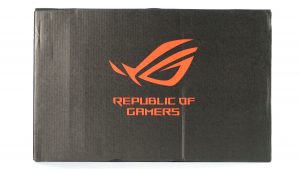
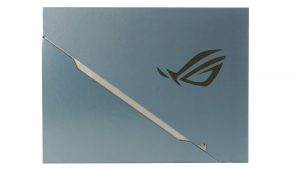
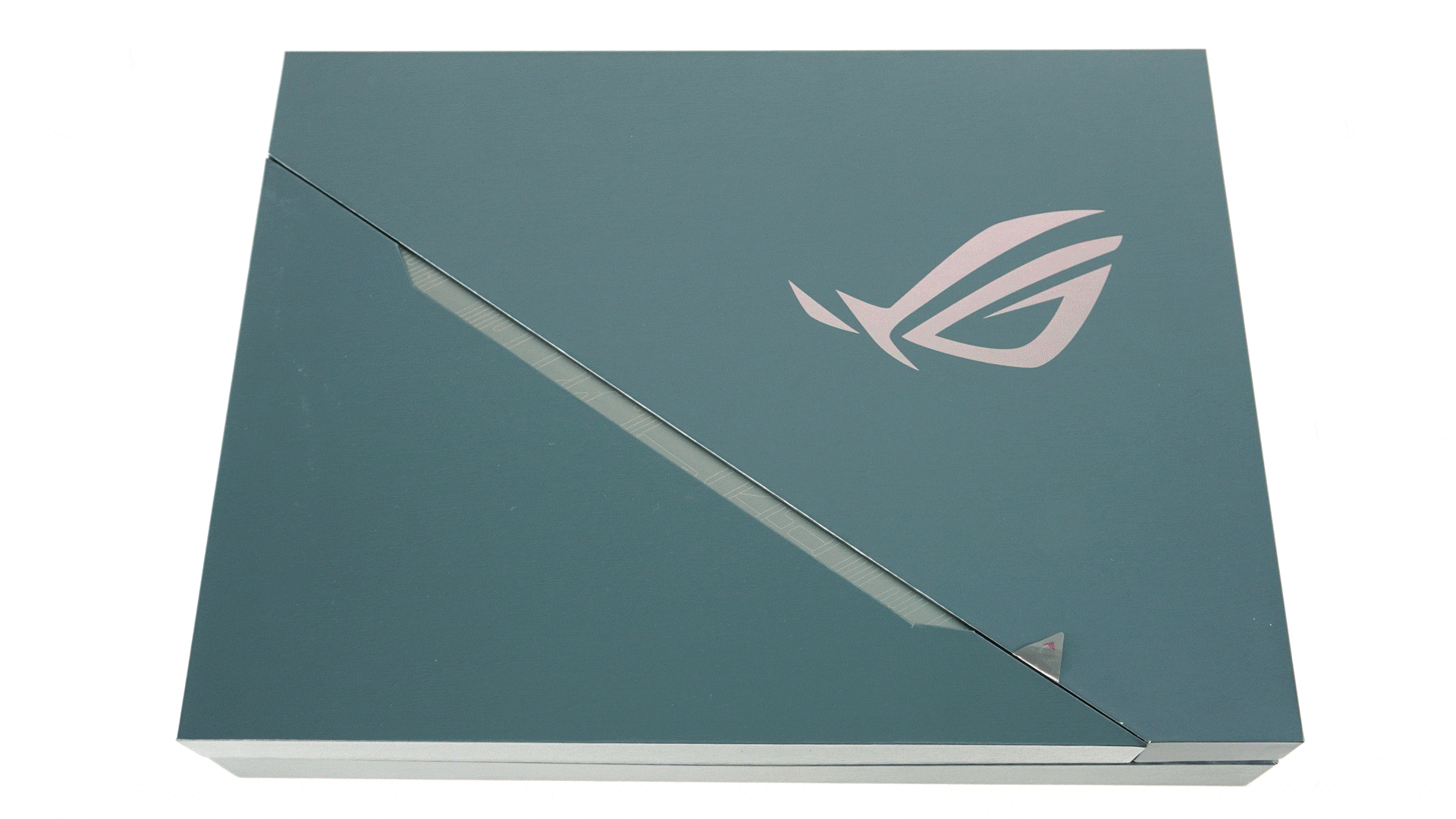
Yes, you read that correctly. Chargers and a camera. Immediately after unpacking, the Zephyrus Duo 15 attracts with its untraditionally rich packaging, which is not seen very often.
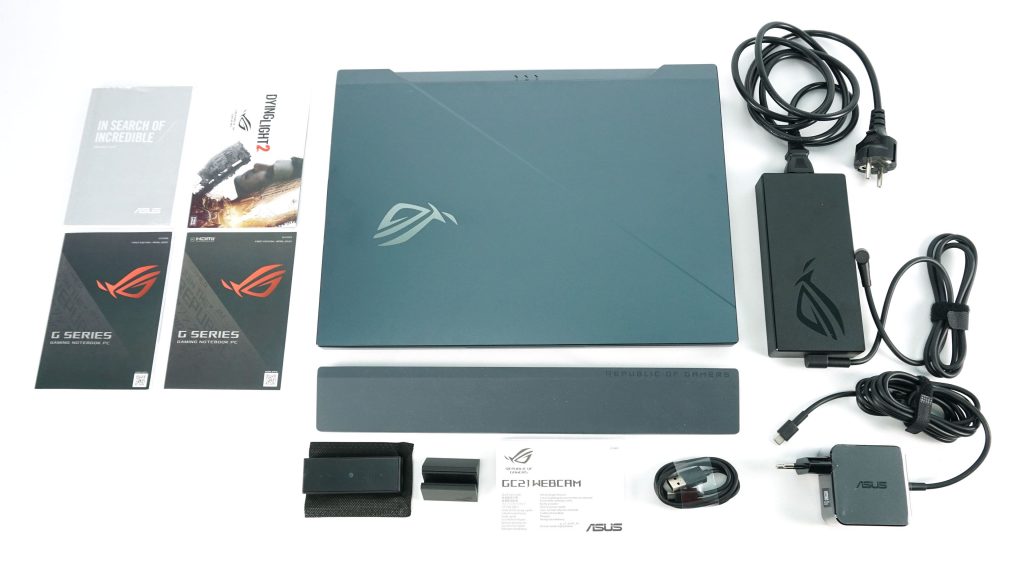
ROG Zephyrus Duo 15 is, as I’ve already mentioned, a new flagship and the maximum you can currently buy for your money from Asus. No surprise, therefore, can be the highest Core i9-10980HK, the new RTX 2080 Super Max-Q in the 90 W version with 1330 MHz boost, 32 GB 3200 MHz RAM or a pair of 1 TB SSDs, rich connectivity, large battery and a pair of premium screens. The paper specs are really top notch and if we are not talking about custom notebooks with desktop components, this is the best you can get on the market at the moment. You may argue that the new Ryzen Renoir is a better choice of CPU, which I do not deny, but unfortunately, you will not find a combination of Renoir + RTX 2080 Super on the market yet. So if you want the highest graphics performance, you need to take the Intel.
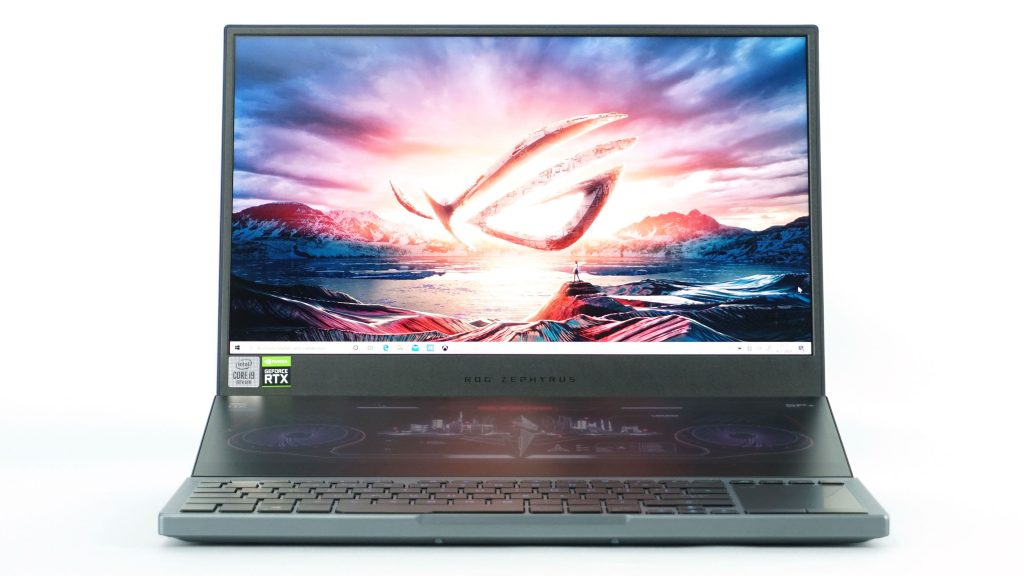
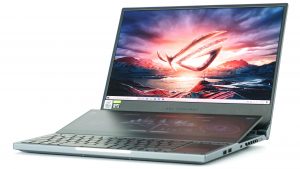
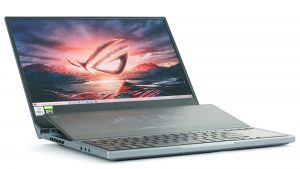
Perhaps the first surprise after pulling it out of the box is that the notebook is relatively compact and light. It is of more of a square shape, as seen on the display lid, and the front of the display with a thicker lower bezel. The reason is, of course, the display behind the keyboard which has to be hidden somewhere. Back to the weight. It is 2.5 kg, which is really not bad for such a powerful laptop with two displays. I expected at least 3 kg, so I was pleasantly surprised. Behind the low weight is a body made of an alloy of magnesium and aluminum, which is pleasant to the touch and does not get dirty easily, nor attract fingerprints which deserves praise.
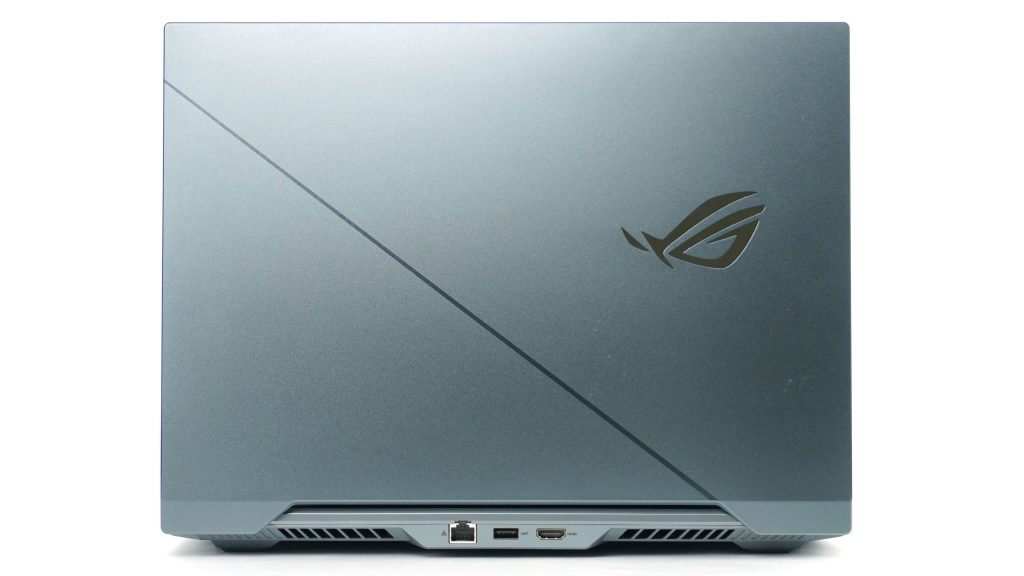
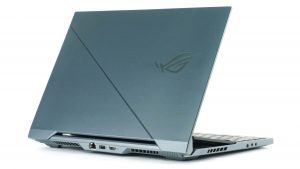
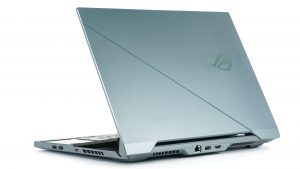
The build quality is at a high level, nothing creaks or bends, despite the fact that there are various moving parts and two hinges more than in a regular laptop. Zephyruses have always suffered from an unstable bottom that formed the base above which the rest of the laptop rose. This bottom plate used to be very thin, and when you put the laptop on your knees, you were afraid it would break. Nothing like this happens here and the bottom is as solid as on other traditional laptops. The AAS cooling has moved up, under the pop out display, but about that later.
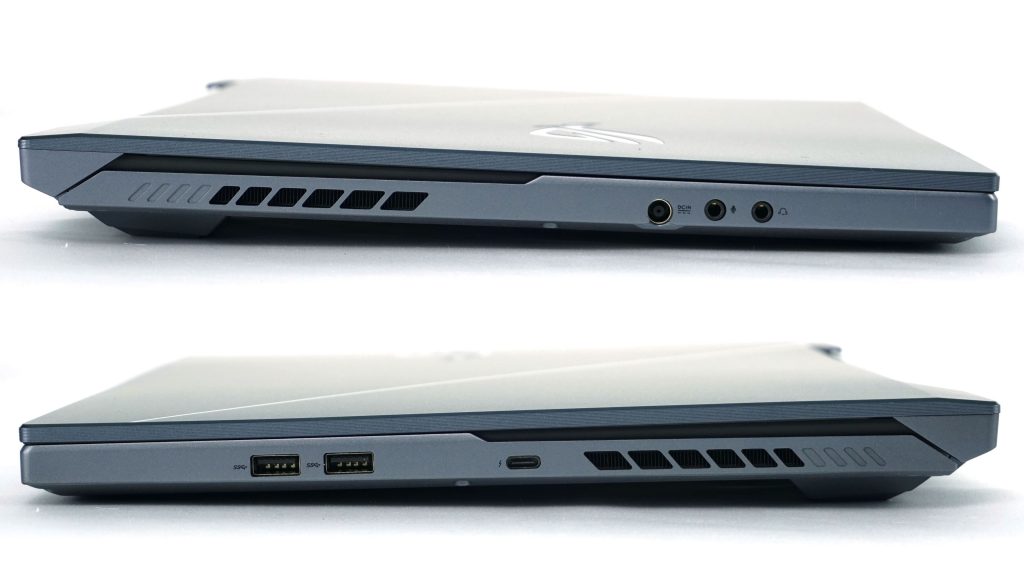
The proper gaming laptop, which also has the ambition to attract creators and streamers, must not lack proper port selection. Therefore, the Zephyrus Duo 15 has three USB-A ports, two of which are 5-gigabit 3.2 Gen 1 on the right side and one 10-gigabit 3.2 Gen 2 on the back. There is also a Thunderbolt 3 port with support for DisplayPort 1.4 and charging via Power Delivery 3.0. It’s a pity that the three USB ports are on the right side, where you will most likely move the mouse so the accessories can hinder your movements. On the left side is a pair of 3.5 mm audio connectors for headphones and a microphone. There is also a power connector, which I praise for the change. Better than it would be positioned on the right.
At the back you will find an RJ-45 connector for Gigabit Ethernet, the already mentioned 10 Gbps USB and HDMI 2.0b which supports 4K at 60 Hz. The port selection is therefore very solid and perhaps only a memory card reader is absent, which the creators would certainly appreciate. However, since the notebook is primarily aimed at gamers, the absence of the reader can be understood.
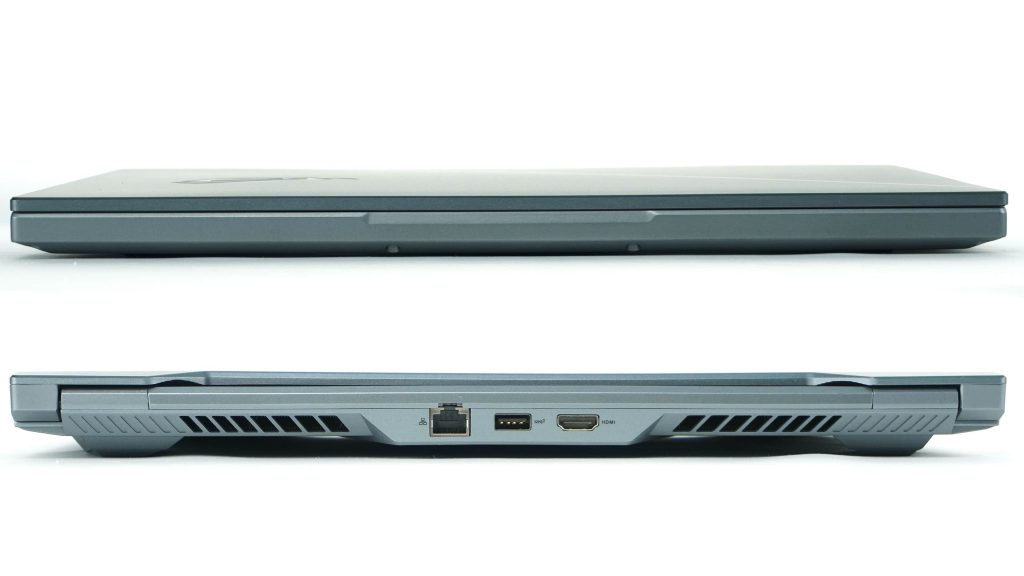
Interesting are the three indicators at the rear ports which can be seen when the laptop is both closed and open.
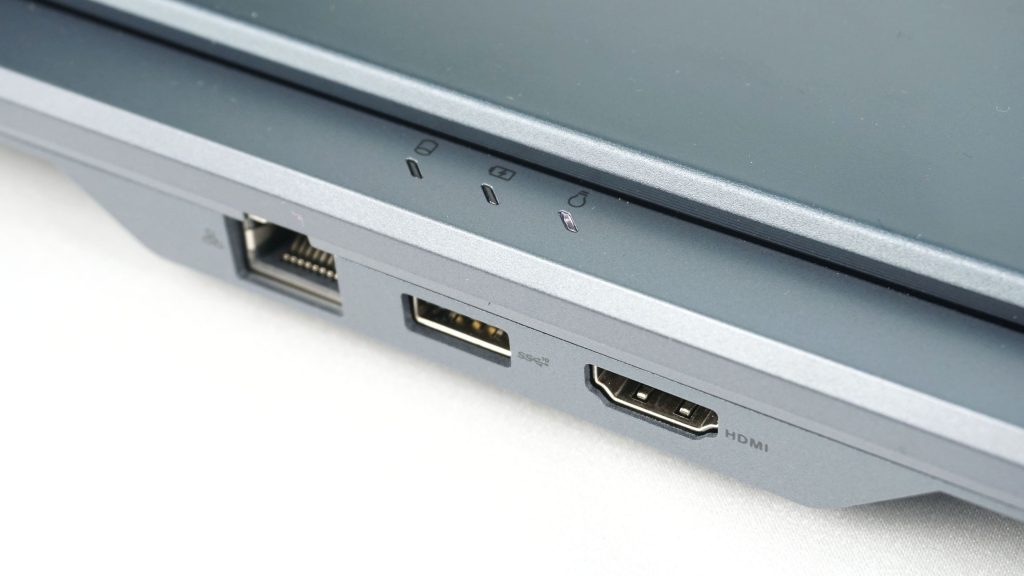
I appreciate the notch for easier opening of the display lid, even with one hand. I missed this on the Zephyrus G14 and hence the laptop was difficult to open.
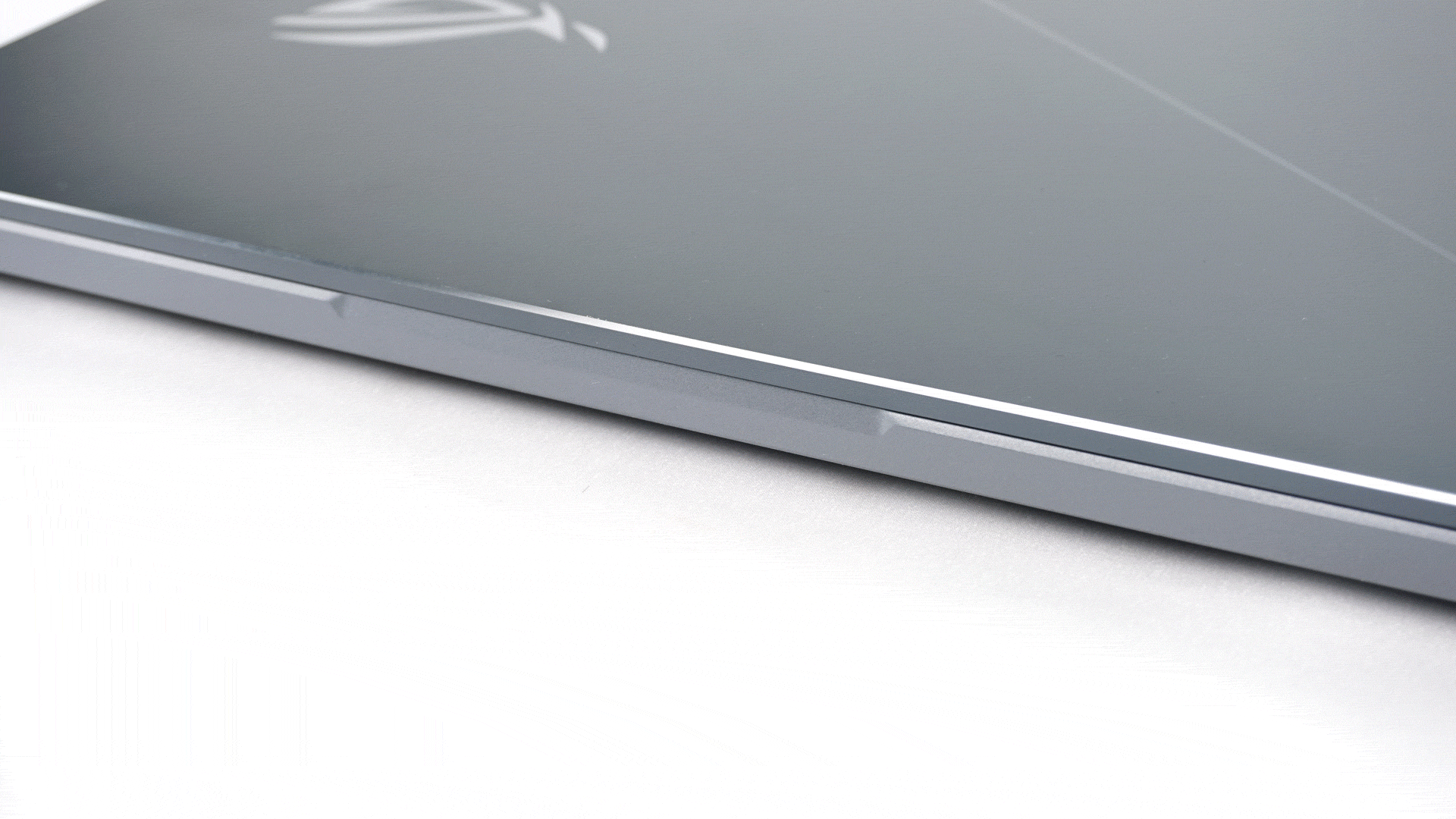
When viewed from above/below, it is easier to see the mentioned “square” shape compared to conventional notebooks.
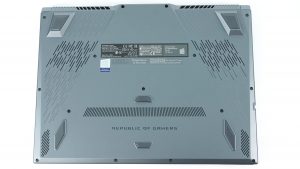
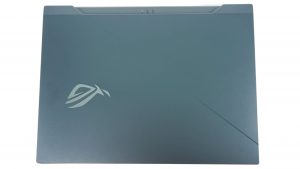
Unscrewing the lower part is simple and relatively fast, except for a higher number of screws. Surprisingly, the bottom part does not offer any large perforation for cooling, as might be expected.
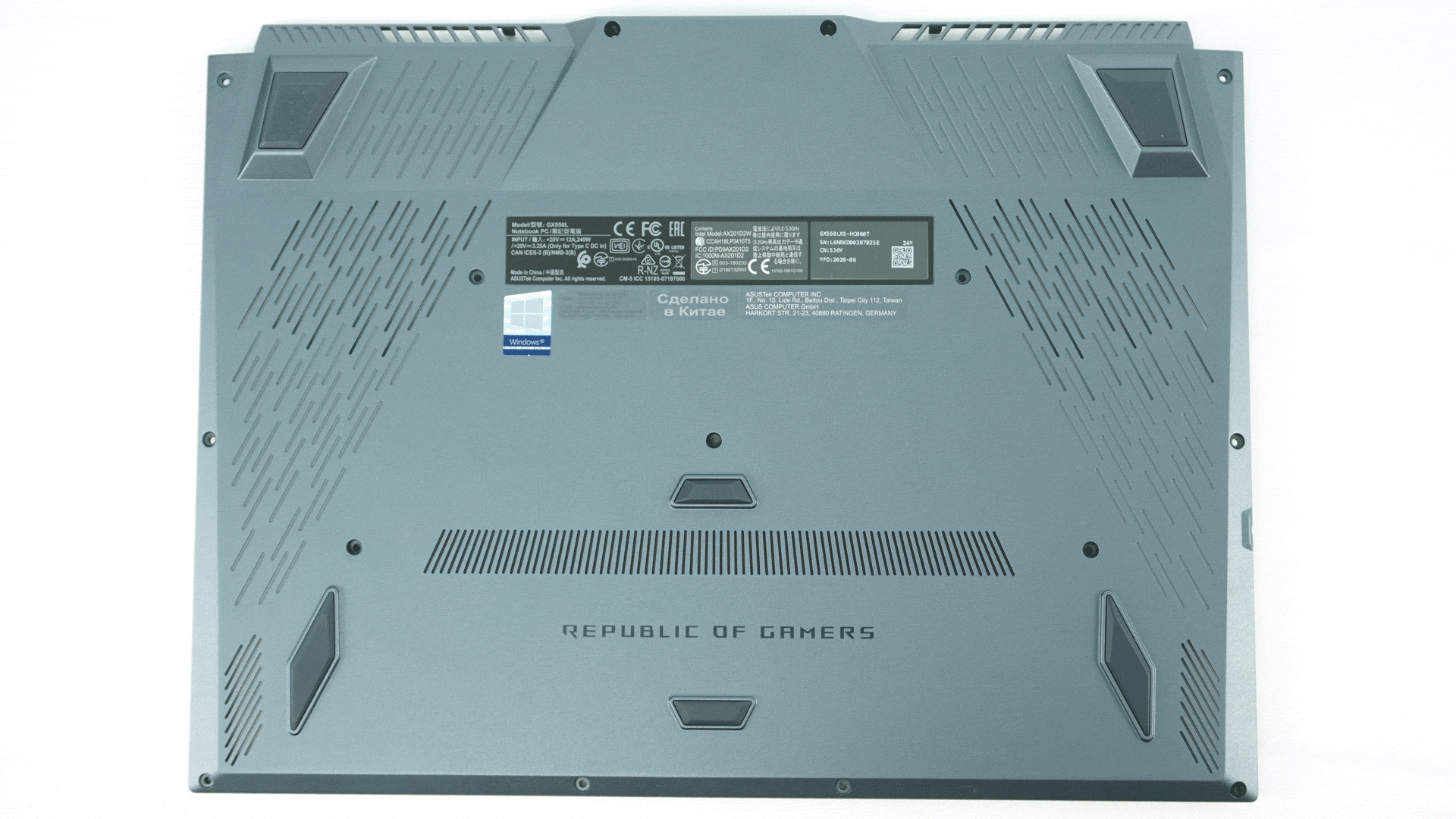
After removing the bottom cover, you get to the components. You can see a typical red motherboard. Cooling, a large battery or a pair of disks definitely deserve attention. So, let’s take a look at it together.
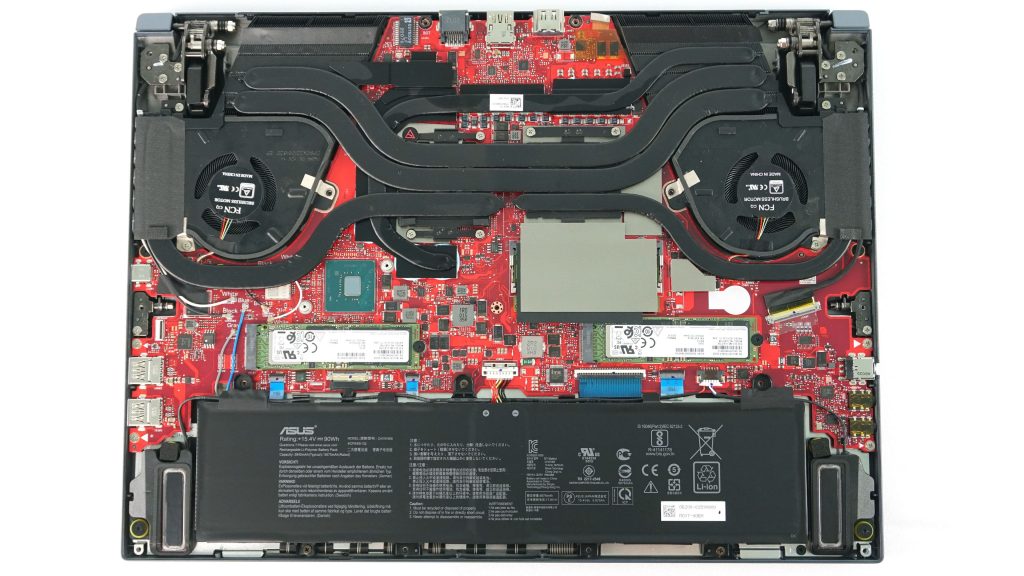
The tested configuration offers the highest possible configuration of the Zephyrus Duo and thus the Intel Core i9-10980HK processor with 8 cores and a clock speed of up to 5.3 GHz for 1-2 cores or 4.4 GHz for all core turbo. Pleasing is 32 GB of RAM at 3200 MHz, where 16 GB is on the board and 16 GB in SO-DIMM format. The other 16 GB should theoretically be exchangeable for 32 GB and thus expand the capacity to 48 GB. There is also a pair of PCIe NVMe SSDs with 1 TB capacity in RAID 0 for maximum speed.
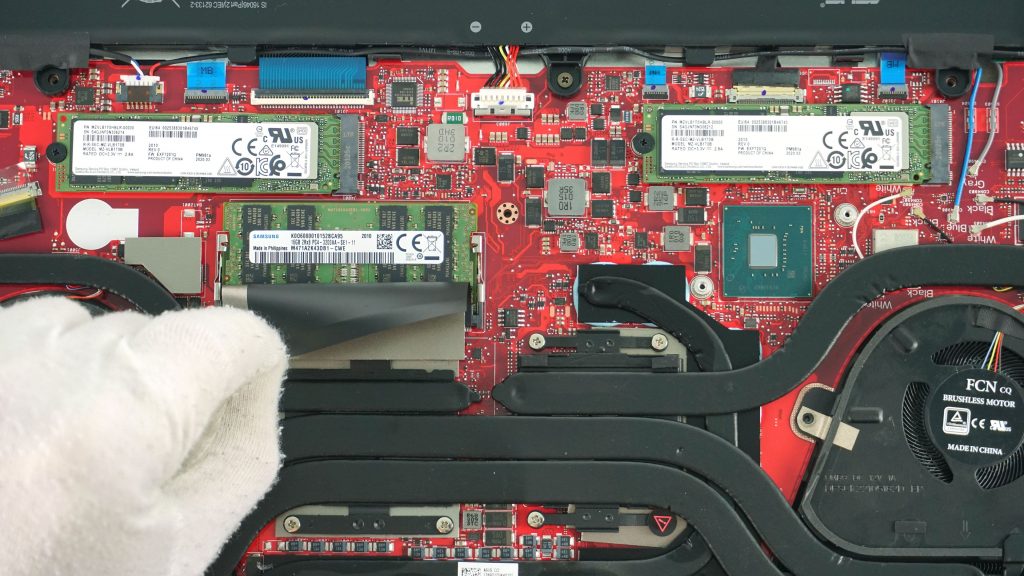
The main star, however, is the RTX 2080 Super graphics card in Max-Q design. 90 W and 1330 MHz are its parametersand even more interesting will be the performance we will look at in a moment. We have tested several notebooks with the RTX 2080 Max-Q and I myself am curious what progress the renewed Super version brings. Lower configurations of the Zephyrus also offer an 8-core Core i7-10875H, which will have lower clock speeds and will not offer an unlocked multiplier. The lower model will also have the 2070 Super in the 90 W Max-Q version with a clock speed of 1390 MHz. The capacity of RAM or SSD will also be lower.
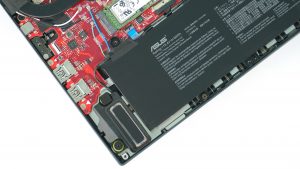
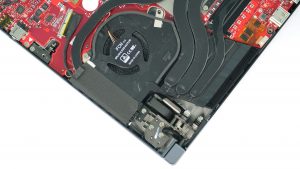
An interesting detail is mostly a pair of hinges hidden inside, which on the one hand open the lid of the display but mainly lift the second display. You won’t see anything like this on another laptop. A pair of speakers on both sides has an output of 4W, which is twice the normal value we are used to in laptops.
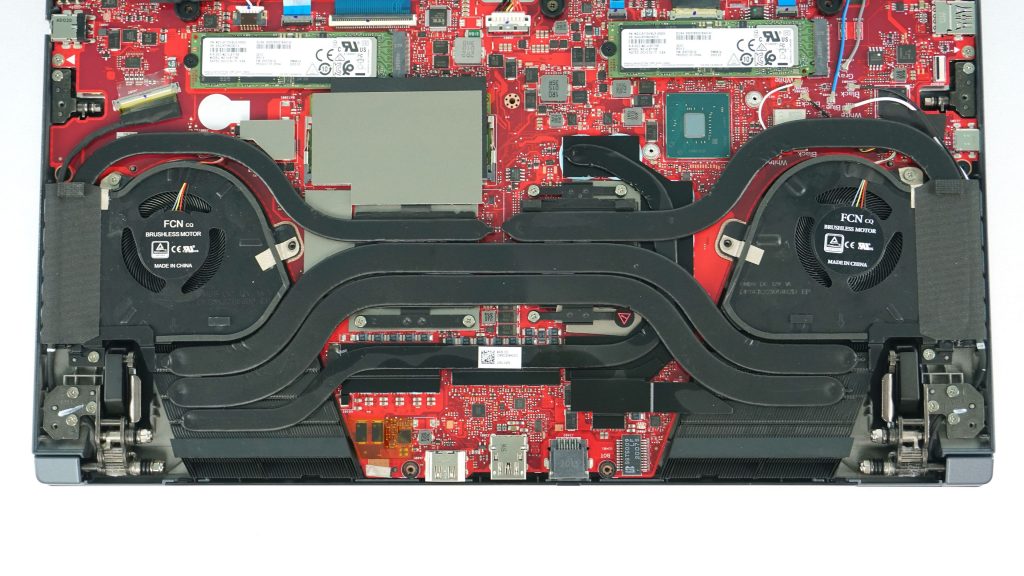
However, the main domain of the notebook is cooling, which uses the AAS Plus system, ie the Active Aerodynamic System, which opens 28.5 mm of space for cooling behind the secondary display and thus allows better air circulation. The manufacturer claims that the air flow has improved by up to 30% thanks to AAS. The larger cooling area also allows for quieter operation, which is usually not the case with ultra-powerful notebooks. Zephyrus Duo 15 boasts about the use of liquid metal Thermal Grizzly, which lowers temperatures and increases performance by up to 10 percent. The application is, of course, automated so that the right amount of liquid metal is used so that it does not spill out of the contact surfaces of the cooler and die over time. It is also worth noting that the back of the notebook is visibly lifted from the desk thanks to the legs.
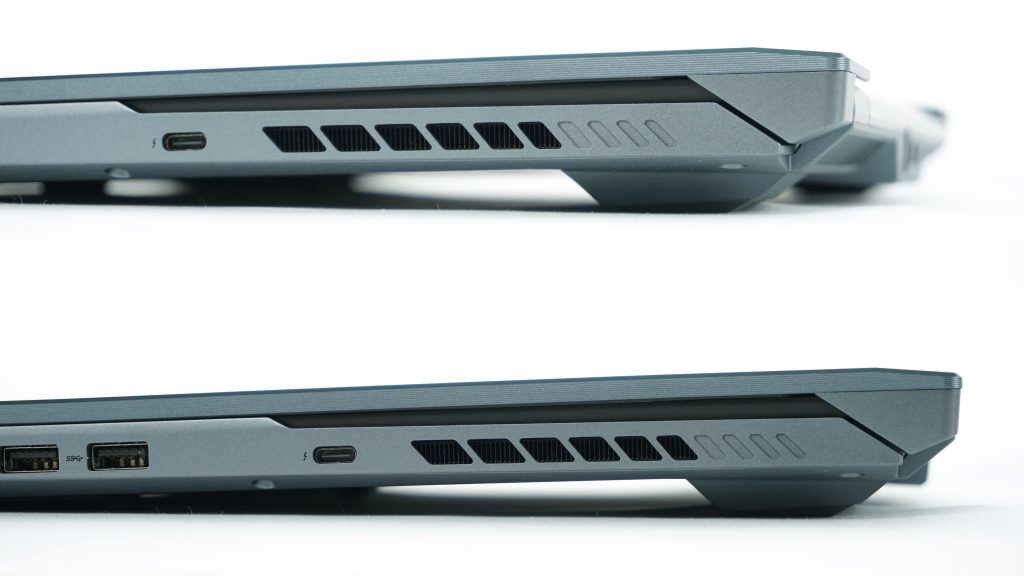
When you open the display, you can see nicely how the secondary display also tilts. Personally, I would appreciate it if the second display extended even more, or if it had an even greater inclination.

In this detail, the hinge, that we found when analyzing the inside of the laptop, can be seen.
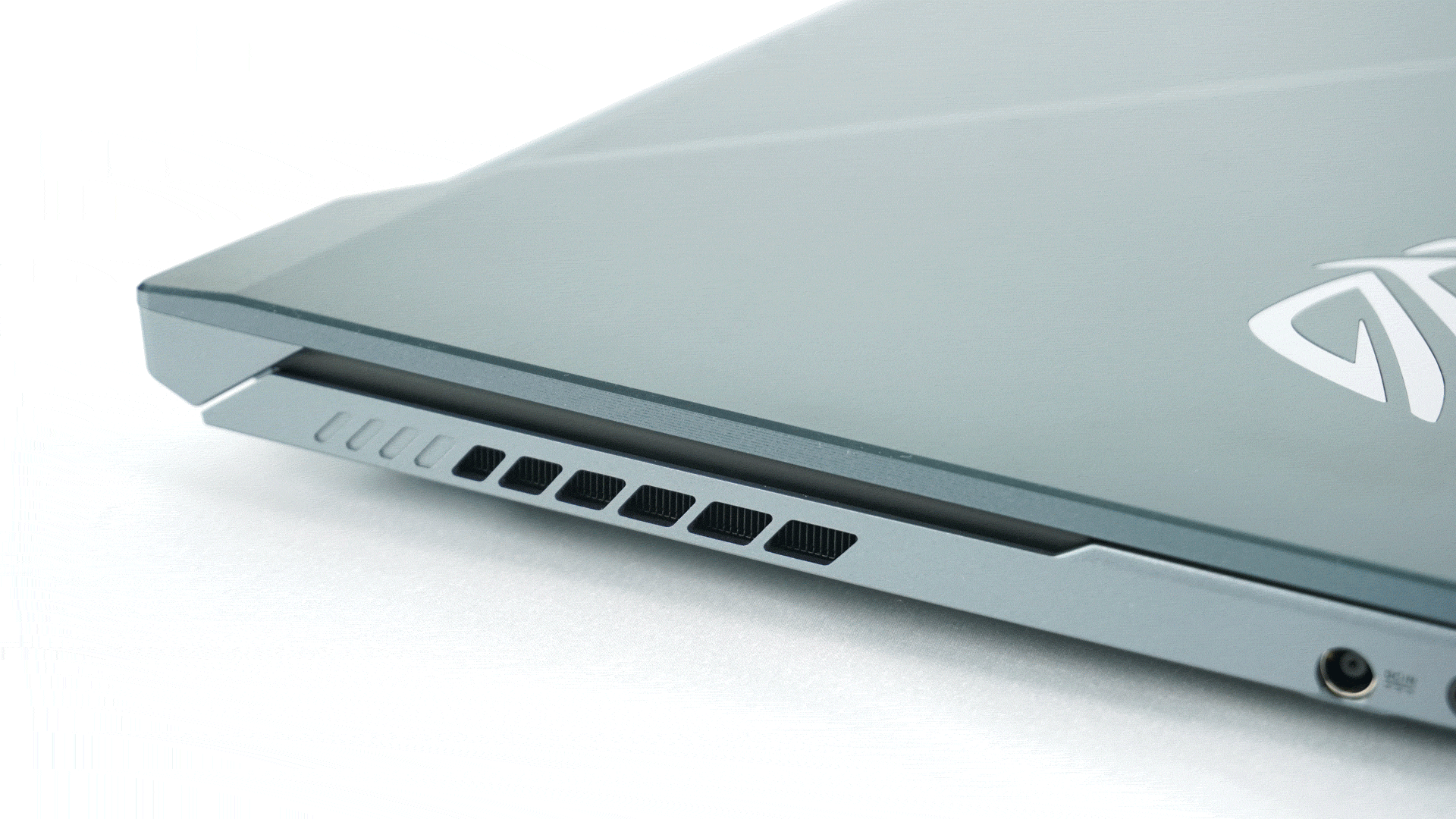
The Fans, that are covered with a grille, cannot be overlooked either.
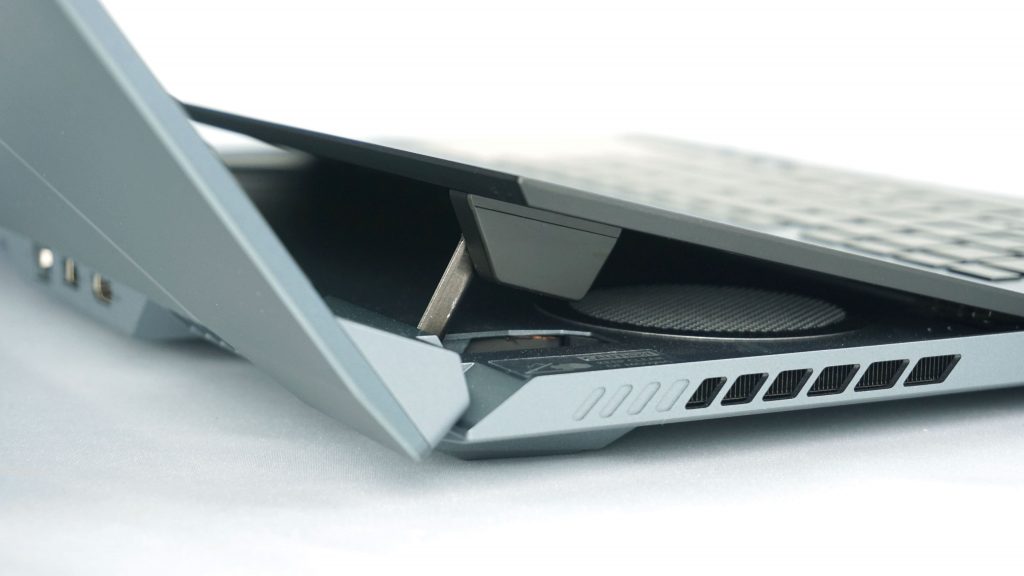
We will deal with ROG ScreenPad Plus in a separate chapter, now let’s look at the keyboard.

That offers a traditional compact design on the bottom of the notebook similar to the first Zephyrus. For most gamers, this solution is unconventional, but I personally like it very much. You can keep your hands on the table and thanks to the thin profile, you can easily reach the keys. There is also RGB backlighting of all keys and synchronization via Aura Sync. But I was a little disappointed with the inconsistency of the backlighting of individual keys, which can also be seen on the gif below. You can hardly see secondary characters at all, which can be a problem for someone. The tested unit also had a classic US layout, I assume that most locals would prefer a CZ/SK layout. On the contrary, I would appreciate the English international version with a two-line Enter.
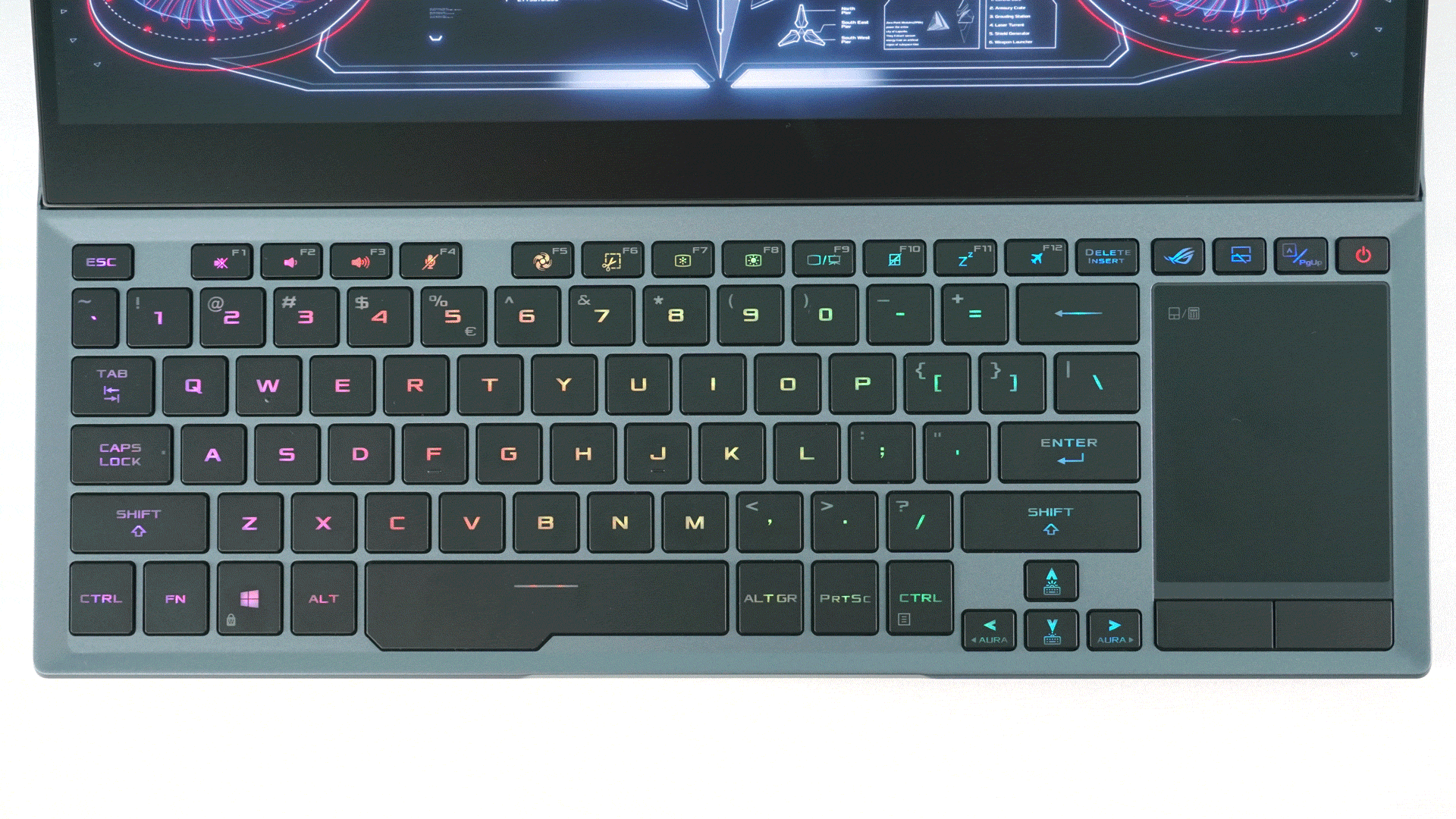
In the notebook package you will also find a wrist rest pad, which further increases the comfort of use. However, I can imagine that use on the road will be impractical and you will leave the pad at home/at work where you use the laptop most often.
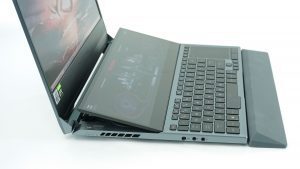
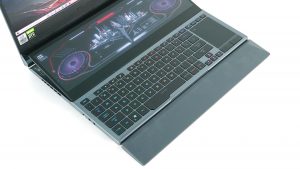
The pad is rubber and has no magnets or anything similar to attach to the notebook. However, I don’t see it as a big problem, thanks to the rubber surface it holds to the table well.
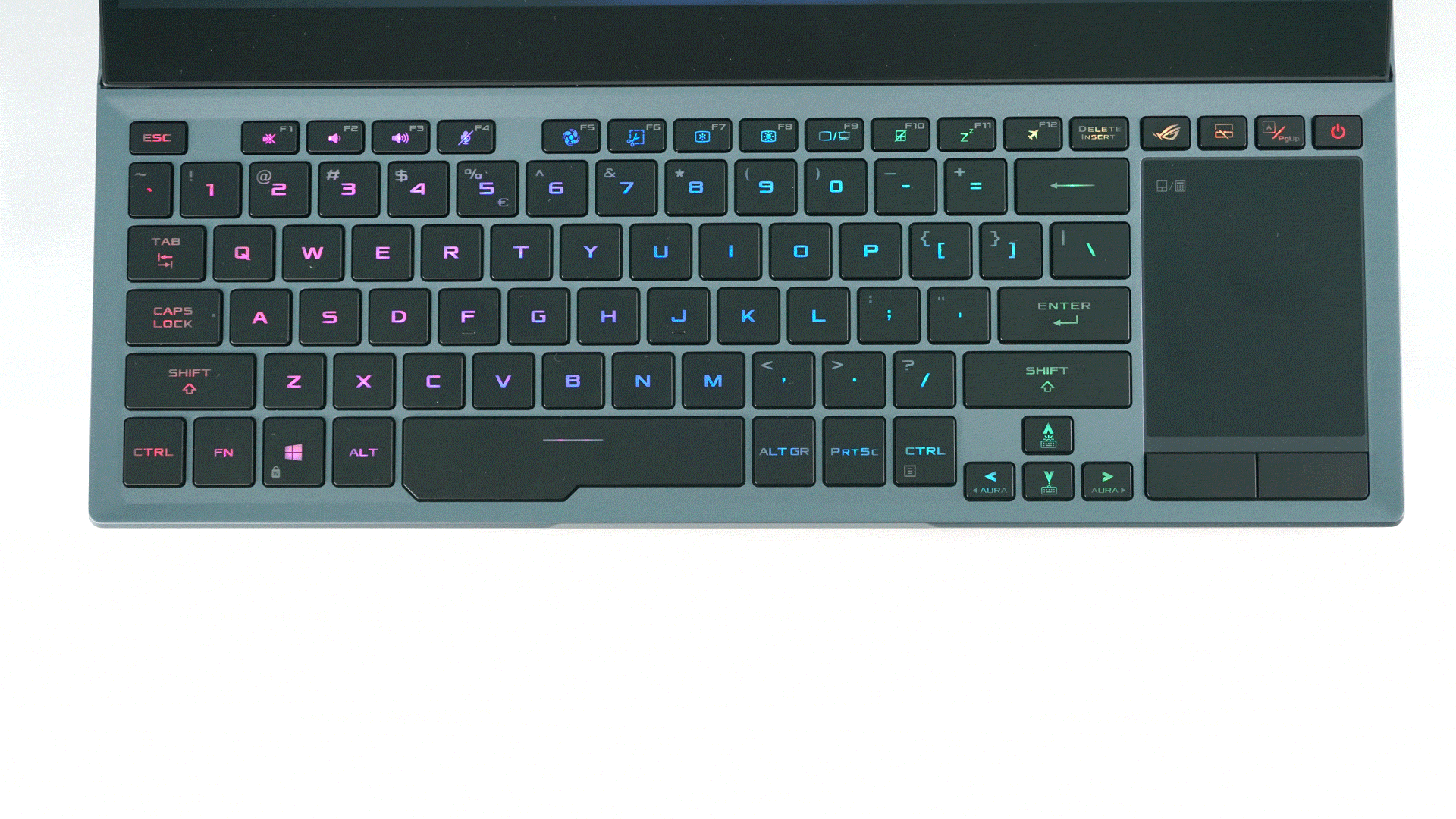
The touchpad, which is located to the right of the keyboard, is also unusually designed. The right and left mouse buttons are separated from the touchpad. Its surface is made out of glass and very smooth. Tracking is good, but smaller dimensions can be an obstacle for some. Either way, it is expected that you will connect a mouse to the laptop so it is more of an emergency solution. Therefore, you may appreciate that you can switch to numeric keypad mode using the button in the upper left corner.
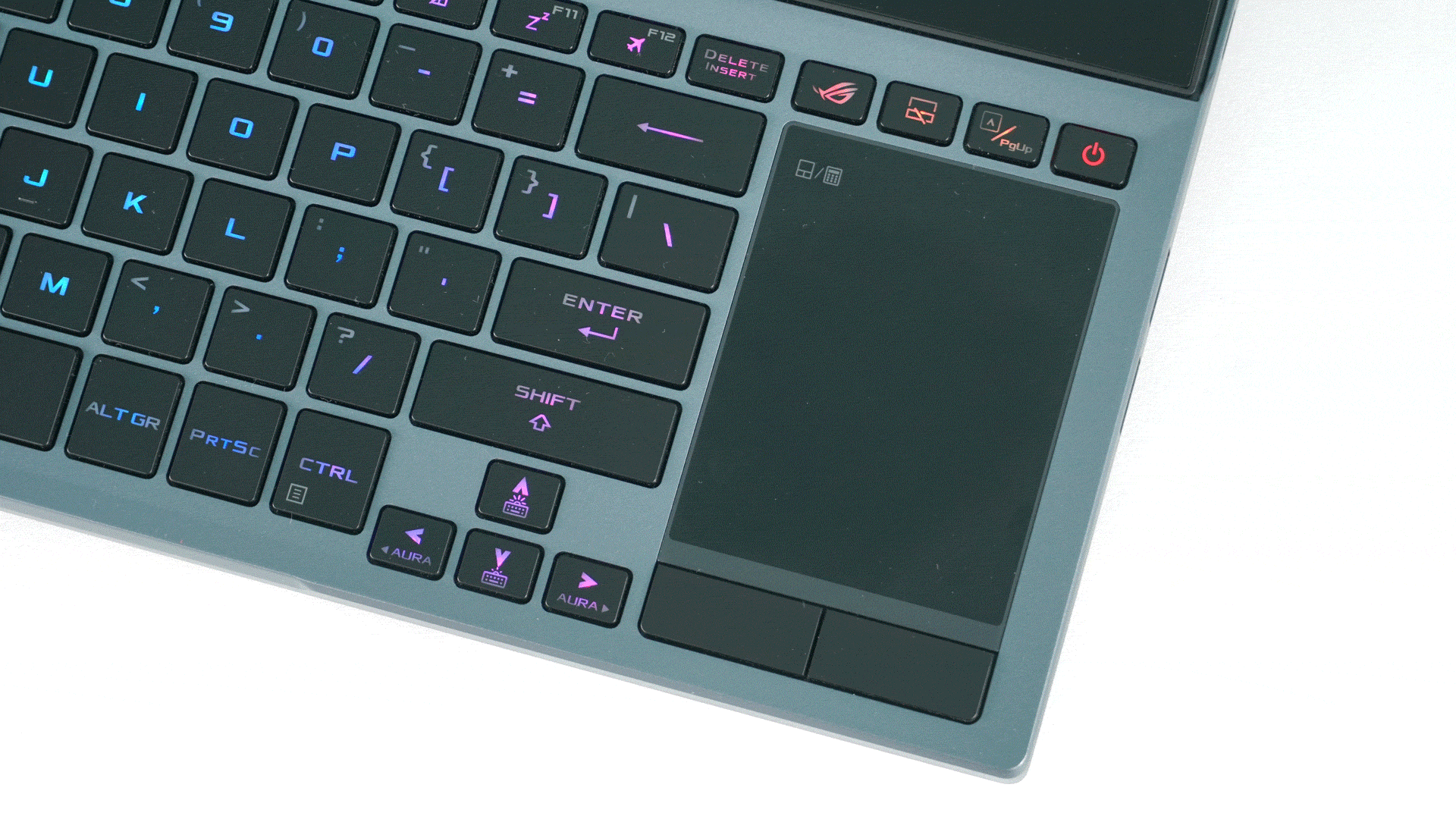
The notebook does not have a front camera, similar to the Zephyrus G14. This can be a problem for the home office nowadays. Also if you would like to stream games and be seen on video. However, nothing is lost, as you will find a full-featured camera in the package that you can use.
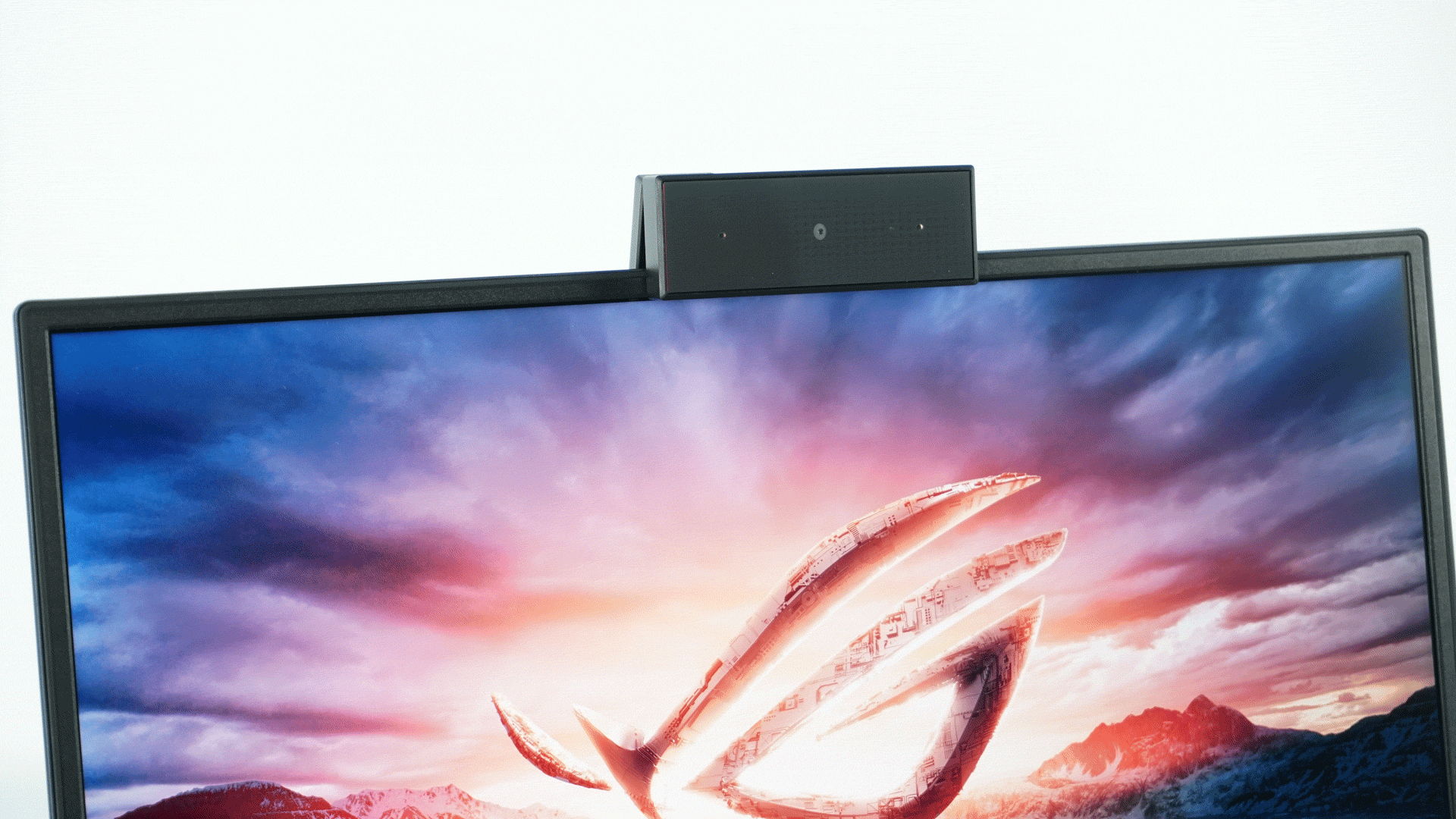
You can attach it to the top of the display, or just place it on a table or a shelf, thanks to the metal holder. It connects via a USB cable and you don’t have to set up anything. Thanks to 1080p and even 60 fps, the image quality is miles away from all the common 720p laptop cameras, whose image has looked the same for perhaps the last 10 years. So the external camera has the advantage of a better image than the built-in ones. The disadvantage, however, is the need to connect it and possibly carry it everywhere with you.
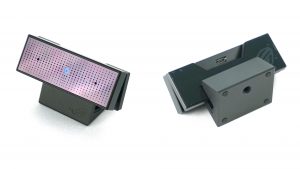
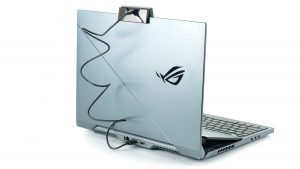
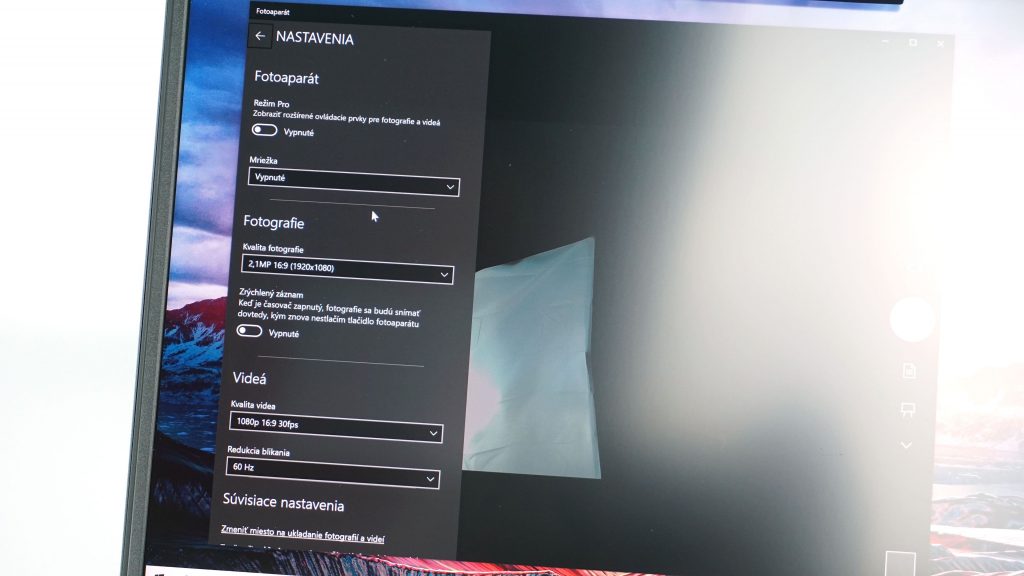
We find a 90 Wh battery in the laptop, which is a really good capacity. There are also larger ones but 90 Wh is definitely above average. The notebook comes with a main 240 W charger, which is connected to the left side via a circular connector. Charging takes two hours, after an hour you are at 79%, after an hour and a half at 98%.
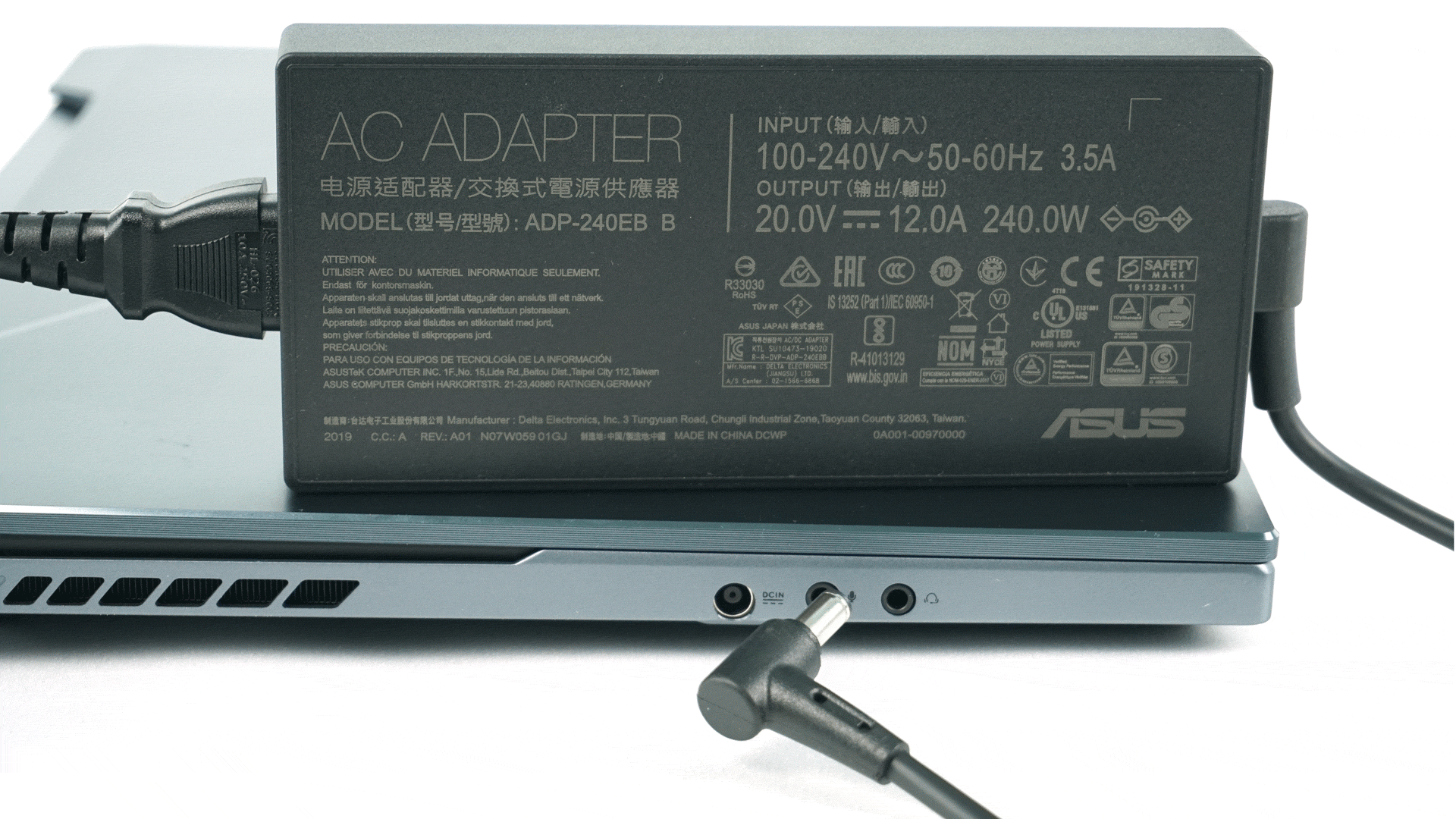
As you may have seen in the introduction, the package also includes a 65 W USB-C charger, which you can use to charge your notebook via the Thunderbolt 3 USB-C port. Charging is, of course, slower, after an hour you will get only 58%. You also can’t count on full performance when using this compact charger, but as an emergency and compact solution for travel, it’s a great accessory.
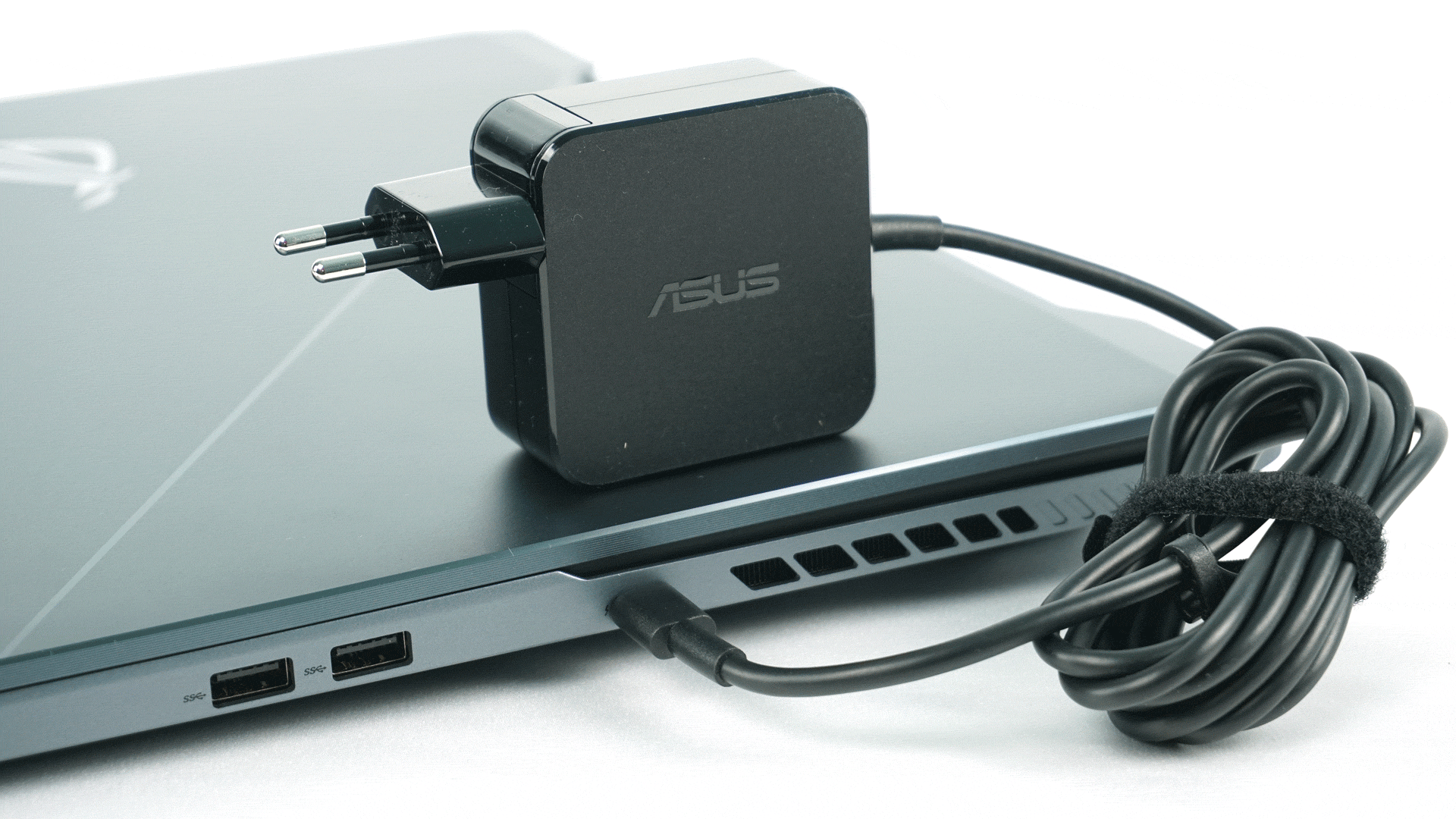
How’s the battery life? The review unit has a 4K display, which is never a good sign. It also supports G-Sync, which often means only an hour-long battery life, as dGPU must still run and cannot switch to iGPU. The 90 Wh battery is big but without Optimus it will still be miserable. Let’s also not forget that we power one more display than usual. So the conditions are not the best, but here again the Zephyrus Duo 15 surprised pleasantly. Thanks to the switch in Armoury Crate, you can switch to Optimus mode after a restart, but better than nothing. In Optimus mode, in our YouTube test, the laptop lasted 3 hours and 18 minutes, which is not a bad value at all, considering all the circumstances. In dGPU + G-Sync mode, it’s only an hour, an hour and a half, which is as usual. However, this laptop is not aimed at long battery usage and surprises like with the Zephyrus G14 do not take place. Nevertheless, it is positive to see that the battery will last more than 3 hours in our demanding test. For less demanding work, 4-5 hours would not be a complete utopia, especially if you reduce the brightness of the display.
Let’s proceed to ScreenPad Plus and the utility application.






